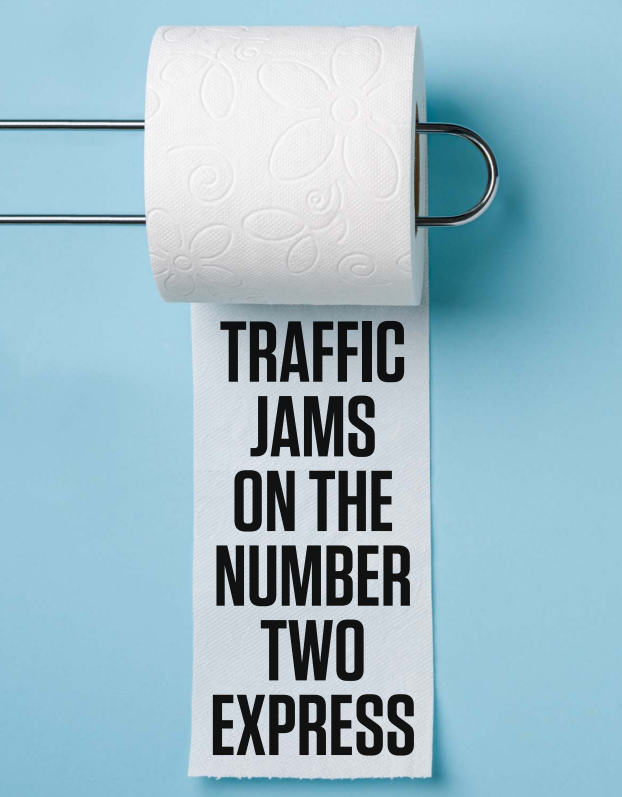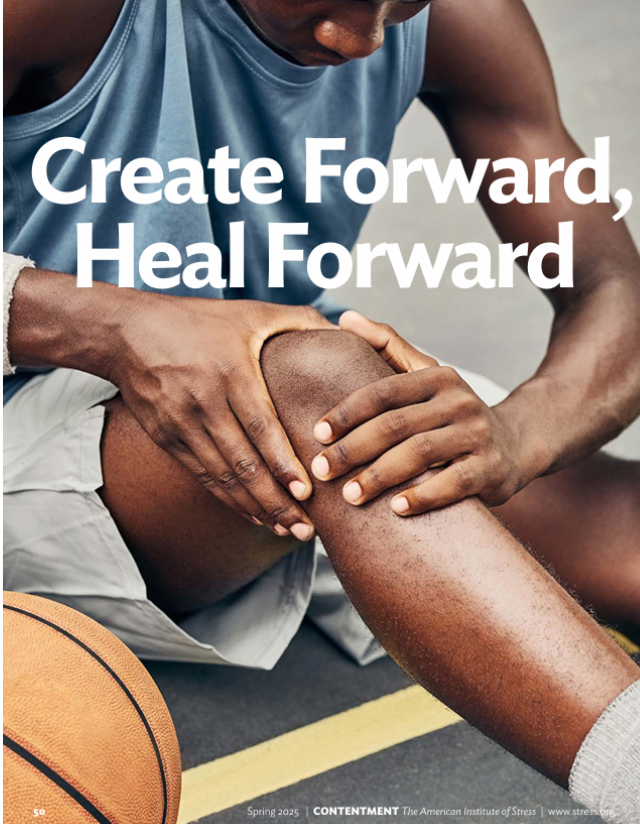From Combat Stress Summer 2024
By Professor Kristine A. Huskey, JD
The legacy of American Indian and Alaska Native service in the United States military is rich with hundreds of years of service and at remarkably high rates per capita. Yet, this subpopulation of Veterans also has some of the highest rates of PTSD, other mental health disorders, and substance abuse. Such issues can lead to misconduct and criminality. The marriage of Veterans Treatment Courts and Tribal Healing to Wellness Courts may be an effective solution, benefiting justice-involved Native American Veterans as well as their families and communities.
American Indians and Alaska Natives in the Military
Participation
American Indians and Alaska Natives (AIANs) have historically served in the United States military in relatively high numbers and that service continues today. “An American Indian or Alaska Native is a person having origins in any of the original peoples of North and South America (including Central America) and who maintains tribal affiliation or community attachment.”1 American Indians served in every war America has fought, starting with the Revolutionary War.2 They also fought in the Civil War, on both sides.2 In World War I (WWI), twenty to thirty percent of the adult male Indian population served, with two-thirds as volunteers, even though Native Americans were not allowed, with some exceptions, to become American citizens until 1924 when the Indian Citizenship Act passed.3,4 Little known is that Native American Soldiers also served as Code Talkers during WWI.2 For example, Soldiers from the Choctaw, Eastern Band Cherokee, and Comanche Tribes took part in impromptu tactics, sending messages in their native languages.4
Native American military service during World War II (WWII) may be more well-known through iconic figures such as Ira Hayes, immortalized by the Iwo Jima Memorial, and the Navajo Code Talkers, whose crucial war contributions came to public eye in the popular movie, “Windtalkers.” The Marine Corp actively recruited and trained Navajo Code Talkers, who became part of the largest code-talking program, though other groups of Soldiers from different tribes also made significant contributions to the code talking program. Code Talkers provided secure real-time communications that were faster than encryption and decryption technology at the time. Indeed, no Native American codes were ever broken by the enemy. Ironically, many Code Talkers who served in both world wars were forced to attend government-run Indian boarding schools, where they were forbidden to speak their Native language and were punished if caught doing so.4 By the end of the war, almost 45,000 Native men (reservation and off-reservation) had served in WWII, representing more than ten percent of the Native population.4 This includes over 6,300 Alaska Natives (ages 12–80), who volunteered to serve without pay in the newly formed Alaska Territorial Guard (“Eskimo Scouts”).5 Native women also joined in sizable numbers, with 800 of them serving during WWII.3 
A considerable number of Native Americans served in the Vietnam War. Between 1960 and 1973, an estimated 42,000 Native Americans served.2,6 They made up 1.4 to 2 percent of all troops sent to Southeast Asia, while they comprised more than 0.6 percent of the total population in the United States at the time.6 A study by Native American Vietnam Veteran and preeminent scholar, Tom Holm (Cherokee), reveals that Indian Soldiers in Vietnam were disproportionately assigned military occupations that ensured their participation in battle.6 In fact, more than eighty percent saw combat, with 36.5 percent seeing “heavy” combat.6 Additionally, due to stereotyping, many American Indians in Vietnam experienced the “Indian Scout Syndrome” as they were often assigned the most dangerous jobs such as walking point, scouts, tunnel rats, nighttime listening posts, Army LLRP (Long Range Reconnaissance Patrol), and Marine Force Recon Battalions because they were perceived to have innate skills.4,6 Willie Haney (Creek Indian), a Vietnam Veteran from Oklahoma, remarked that popular movies about Vietnam rarely portrayed Indian people yet “out in the field in ‘Nam,’ the first thing an officer would do is say ‘Chief, you take point.’ The man may have never lived in the country in his life, but if he was Indian, it was always, ‘Chief, take point.’”2
Stereotypes about Native Americans in war continued with America’s conflicts in the Middle East. During the Gulf War (1990–1991), Marine Brigadier General Richard Neal referred to enemy territory as “Indian Country.”2 The U.S. military continued to use stereotypes throughout the more recent conflicts in Afghanistan and Iraq, with the most concerning being the code name “Geronimo” for Osama Bin Laden — our most vilified enemy post 9/11 — in the 2011 raid that resulted in his death, yet still characterizing enemy territory as “Indian Country.”4 Meanwhile, 17,500 AIANs served in the Operation Enduring Freedom/Operation Iraqi Freedom eras (2003-2011), increasing to almost 20,000 serving in 2022.3,7
Despite some imprecision in counting American Indians and Alaska Natives, evidence shows that “American-Indian Veterans have long represented the highest percentage of their total population” of all minority groups in the U.S. Armed Forces and continue to do so.1,4 Records from WWI, WWII, and the Vietnam War support this proposition.3 And since 9/11, almost 19 percent of AIANs have served, compared to an average of 14 percent of all other ethnicities.8
PTSD, Other Mental Health Issues & Substance Use Disorders
For many Veterans, the aftermath of war often includes minor to severe lifelong physical and/or mental health and substance abuse disorders. For example, for Veterans from the Vietnam, Operation Desert Storm, and Operation Enduring Freedom/Operation Iraqi Freedom eras, lifetime prevalence for Post Traumatic Stress Disorder (PTSD) has ranged from 18.7 percent to 37.3 percent.9 PTSD is one of the most common mental health disorders among United States Veterans and is associated with personal, social, and health problems.9 In fact, studies show that more than fifty percent of Veterans with PTSD have at least one comorbid condition, such as depression, anxiety disorders, or substance use disorders.9 In other words, Veterans with PTSD have increased odds of substance use and psychiatric disorders.9
There has not been abundant research on Native American Veterans. The most recent publicly available data comes from the National Epidemiologic Survey on Alcohol and Related Conditions-III (NESARC-III) (conducted in 2012 and 2013) and reveals that the lifetime prevalence of PTSD in Native American Veterans was 24.1 percent.9 The Survey shows the next highest ethnic/racial group was Black Veterans at 11.03 percent and then Hispanics at 7.55 percent. White Veterans were at almost 6 percent and the total Veteran sample had a lifetime prevalence of PTSD of 6.9 percent. Thus, Native Veterans were more than three times as likely to have PTSD than the general Veteran population. Indeed, data from 2014 shows that among Veterans (ages 18-44) who were using the Veterans Health Administration (VHA) for healthcare services, the most common diagnosed condition was PTSD, with American Indian or Alaska Native patients experiencing the highest rate of all groups at 31 percent.10
A recent study of female Veterans shows similar results: Natives have “significantly higher scores” on the Clinically Administered PTSD Scale (CAPS) than whites.11 Native female Veterans also showed higher levels of certain personality disorders, more extensive exposure to trauma, and poorer emotional functioning. Importantly, the study also notes that “symptom expression” for Native American Veterans is likely influenced by historical or intergenerational trauma, which happens when the dominant society perpetrates mass trauma on a people, whose biological, societal, and psychological symptoms are then passed down to successive generations, which can then be exacerbated by factors such as marginalization and racism.11 Accordingly, “race-related stress experienced by Natives may be linked to more severe PTSD symptoms.”11
The above findings are reinforced by studies of the general American Indian and Alaska Native population. A 2024 medical educational manual concludes:
The cumulative emotional and psychological impact of colonization, forced relocation, and cultural disruption contributes to the intergenerational trauma faced by many in various American Indian and Alaska Native communities. This trauma can manifest as depression, anxiety, substance abuse, and other mental health disorders.12
In fact, American Indian and Alaska Natives have disproportionately high rates of mental health disorders/psychiatric disorders. While the general population has a prevalence of lifetime PTSD at 4.8 percent to 6.4 percent, AIAN populations show the prevalence of PTSD is estimated at 16 percent to 24 percent.12 Risk factors identified for PTSD for these groups include, among a few others, high exposure to violence, substance use disorders, and combat experience.12
Veterans Treatment Courts and Tribal Healing to Wellness Courts
As discussed previously, American Indian and Alaska Native Veterans, like many Veterans, may suffer from mental health and/or substance abuse issues. Evidence shows that these issues can lead to misconduct while in service and criminality in the civilian world.13,14 The U.S. Department of Justice notes, “Veterans with post-traumatic stress disorder (PTSD) are 61 percent more likely to have criminal justice involvement. Veterans with traumatic brain injury (TBI) are 59 percent more likely to experience criminal justice involvement.”15 The needs of Native American Veterans with these and other underlying issues could be addressed within existing civilian criminal justice frameworks and by expanding or creating new ones. Veterans Treatment Courts (VTCs) exist in various criminal courts to help Veteran defendants, whose underlying condition(s) have resulted in criminal charges, obtain treatment. Similarly, Tribal Healing to Wellness Courts (THWCs), also called Tribal Wellness Courts, exist in Tribal justice systems to help AIAN defendants with criminal charges receive treatment for their underlying disorders. Yet, there is little or no published data regarding AIAN participation in VTCs and scant public information on Veteran participation in THWCs. Despite the lack of external data, some Tribal Veterans Wellness Courts, or Tribal Veterans Treatment Courts, do exist. For example, the Alamo-To’hajiilee Judicial District of the Navajo Nation has a Tribal Wellness Court and had, or may still have, a specialized Veterans track within the Court. The Yurok Tribe has a Wellness Court, which had a Veterans Wellness Court that was initially funded by the Bureau of Justice Assistance. Establishing more Tribal Veteran Wellness Courts or creating Veterans tracks in Tribal Wellness Courts could benefit Native American Veterans, their families, and communities.
The first official Veterans Treatment Court was established in 2008 in the Buffalo City Court system by Judge Robert Russell. The following year, there were a handful of such courts and by 2022, there were 537 VTCs, Veterans dockets, or tracks for Veterans in an existing specialized docket.16 VTCs, which are typically situated in local, regional, state, and federal criminal courts, recognize the negative impact of military service — particularly exposure to combat, war zones, and military sexual trauma — and the possible connections between such service, mental health and substance abuse issues, and misconduct. VTCs are problem-solving courts, modeled after drug courts, that treat the Veteran’s underlying problem(s) through therapy, counseling, participation in alcohol or drug programs, and other rehabilitative means, rather than subject the Veteran to incarceration and fines.17,18 A VTC can address the unique needs of justice-involved Veterans, whose shared military experiences create an opportunity for a culturally sensitive courtroom and treatment that increase the chances of success for the program participant. These courts rely heavily on the VA for coordination of services and treatment or counseling and many include Veteran peer mentors, who, being personally familiar with military culture, can provide extremely effective support and camaraderie for participants, as well as other services, such as transportation to court hearings or counseling sessions.19 Preliminary evidence shows that VTCs are successful in reducing recidivism as well as decreasing negative factors, such as substance use and mental health disorders, and increasing positive factors, such as stable housing and employment, familial relationships, and community participation.20
A Tribal Healing to Wellness Court, or Tribal Wellness Court, is a problem-solving court that, like a VTC, follows the drug court model by favoring rehabilitation over punishment and by addressing criminal misconduct with treatment rather than incarceration and fines. Court names may include [Tribal] Healing to Wellness Court, Wellness Court, Healing Court, Treatment Court, Substance Abuse Court, Alternative Court, and others in various Tribal languages. Like VTCs, these courts address a defendant’s underlying alcohol and/or other substance abuse problems, as well as social and behavioral issues. THWCs are the inspired outcome of AIAN Tribal leaders and judges who, seeing the benefits of the U.S. drug court movement in the late 1980s, recognized the potential for addressing the high rates of alcoholism and associated crimes in Indian country.21
THWCs are uniquely adapted to the Tribal community in which they sit and are intended to reflect traditional indigenous dispute resolution systems and “reinforce tribal values related to restorative justice.”22 THWCs blend a conventional drug court approach with Indigenous restorative justice principles and attempt to heal both the offender and victim by addressing the root causes of the imbalance. Indigenous restorative justice places great emphasis on the role of community: it is expected to participate in the resolution of a dispute or harm committed, ensure compliance by the parties or offender, provide protection to the victim, and “own” the problem.23 Family is also crucial to Indigenous restorative justice principles and processes. Judge Joseph Thomas Flies-Away of the Hualapai Nation Court writes that families are “fundamental to Indigenous cosmology and centerpieces of Native societies.”24 Thus, Tribal Wellness Courts, with their drug court collaborative approach to problem-solving, are by nature conducive to restorative justice principles of healing and a process that includes family, extended family, and community.
Another feature distinguishing THWCs from conventional drug courts is the incorporation of Native cultural and traditional practices. The Tribal Law and Policy Institute’s “Treatment Guidelines” suggest, among other program activities,: (1) using ceremony to promote spiritual healing; (2) including clan relatives, elders, medicine men and others as healers, mentors, and advisors to participants; (3) using meaningful symbols of healing such as the medicine wheel, an eagle feather, or other Tribal objects in Wellness Court activities; and (4) incorporating Tribal cleansing rituals.25 Specific examples can be found practiced in individual Wellness Courts in various Tribal courts.
A Tribal Veterans Healing to Wellness Court, or a Veteran-focused track within a Wellness Court could greatly benefit justice-involved American Indian and Alaska Native Veterans by addressing their underlying conditions of PTSD, other mental health problems, and alcohol/substance abuse issues, and ultimately help them to reintegrate back into their families and communities. Conversely, recognizing the unique history and cultural context of Tribal Veterans in state VTCs may improve success for this subpopulation. A treatment or wellness court individualized for both military experiences and Tribal traditions, including restorative justice principles, could speak to the unique status of being both a Native and a warrior, thus increasing successful participation and outcomes in a treatment program. American Indians and Alaska Natives have served in the military in considerable numbers and have borne the consequences of their service and their Indigenous identity. The Tribal Veteran may identify as both a Native and a Veteran, but he or she is one whole person, who may benefit from marrying the two approaches in a judicial wellness program.
This article was first published in longer form in the UMKC (University of Missouri-Kansas City) Law Review as “The Case for Tribal Veterans Healing to Wellness Courts,” 90 UMKC L. Rev. 577 (winter 2021). Rewritten by and published with the permission of the author.
References
- National Center for Veterans Analysis & Stats. U.S. Department of Veterans Affairs. Minority Veterans Report: Military Service History and VA Benefit Utilization Statistics (Mar. 2017).
- Robinson, G and Lucas, P. From Warriors to Soldiers: A History of American Indian Service in the United States Military. Tribal Eye Productions (2017).
- Harris, AN and Hirsch, MG. Why We Serve: Native Americans in the United States Armed Forces. Smithsonian Books (2020).
- Meadows, WC. (2023). Native American “Warriors” in the U.S. Armed Forces. In Ender, MG, Kelty, R, Rohall, DE, and Matthews, MD (Eds.), Inclusion in the American Military: A Force for Diversity. 2d ed. Lexington Books.
- National Center for Veterans Analysis & Stats. Minority Veterans Report: 14. Kimmons, S. Alaska Natives Defended Their Territory 75 Years Ago. Army News Service. (Nov. 16, 2017). https://www.defense.gov/Explore/News/Article/Article/1374255/alaska-natives-defended-their-territory-75-years-ago/.
- Holm, T. Strong Hearts Wounded Souls: Native American Veterans of the Vietnam War. University of Texas Press (1996).
- U.S. Department of Defense. 2022 Demographics: Profile of the Military Community.
- Bennett, C and Simkins J. A ‘Warrior Tradition’: Why Native Americans continue fighting for the same government that tried to wipe them out, Military Times (Nov. 15, 2019).
- Smith SM, Goldstein RB, Grant BF. The association between post-traumatic stress disorder and lifetime DSM-5 psychiatric disorders among veterans: Data from the National Epidemiologic Survey on Alcohol and Related Conditions-III (NESARC-III). J Psychiatry Res. 2016 Nov; 82:16-22. doi: 10.1016/j.jpsychires.2016.06.022. Epub 2016 Jul 4. PMID: 27455424; PMCID: PMC5026976.
- Population Page—Racial and Ethnic Minority Veterans, Office of Health Equity, U.S. Dep’t of Veterans Affairs.
- C’de Baca, J., Nason, E., Castillo, D. T., Keller, J., Chee, C. L., & Qualls, C. (2016). Examining Relationships Among Ethnicity, PTSD, Life Functioning, and Comorbidity in Female OEF/OIF Veterans. Journal of Loss and Trauma, 21(5), 350–359. https://doi.org/10.1080/15325024.2015.1084851
- Kwon SC, Kabir R, Saadabadi A. Mental Health Challenges in Caring for American Indians and Alaska Natives. [Updated 2024 Feb 12]. In: StatPearls [Internet]. Treasure Island (FL): StatPearls Publishing; 2024 Jan-.
- Huskey, KA. Reconceptualizing “the Crime” in Veterans Treatment Courts. Federal Sentencing Reporter. 2015, 27(3): 178-186.
- Slattery M, Dugger MT, Lamb TA, Williams L. Catch, treat, and release: Veteran Treatment Courts address the challenges of returning home. Substance Use & Misuse. 2013 Jul, 48(10):922-932. doi: 10.3109/10826084.2013.797468. PMID: 23869463., 923-24 (2013).
- Fact Sheet: Access to Justice is Access for Veterans, U.S. Dept. of Justice, Office for Access to Justice (May 2024).
- National Treatment Court Resource Center. Treatment Courts Across the United States (2022). National Treatment Court Resource Center. University of North Carolina Wilmington. https://ntcrc.org/wp-content/uploads/2023/11/2022_NTCRC_TreatmentCourt_Count_Table.pdf.
- Cassidy, JM and Huskey, KA. (2016). Veterans Treatment Courts. In Clauss, B and Simcox SR (Eds.), Servicemembers and Veterans Rights: §§ 10.01[2][a], 10.02.
- Russell, RT. Veterans Treatment Court: A Proactive Approach. New England Journal on criminal and civil confinement. 2009, 35(2): 357-372.
- Huskey, KA. The Case for Tribal Veterans Healing to Wellness Courts. UMKC Law Review. 2022, 90(3): 577-596.
- DeVall, K, Lanier, C, and Baker, L. National Drug Court Resource Center. Painting the Current Picture: A National Report on Treatment Courts in the United States, Veterans Treatment Court Brief (2023).
- Flies-Away, JT et al. Tribal L. & Pol’y Inst. Overview of Tribal Healing to Wellness Courts (2014).
- Cordero, K, Garcia, S and van Schilfgaarde, L. Tribal L. & Pol’y Inst. Tribal Healing to Wellness Courts: Intergovernmental Collaboration (May 2020).
- Melton, AP. (2005). Indigenous Justice Systems and Tribal Society. In McCaslin, WD (Ed.), Justice as Healing: Indigenous Ways: 108-120. Living Justice Press.
- Flies-Away, JT and Garrow, CE. Healing to Wellness Courts: Therapeutic Jurisprudence+. Michigan State Law Review: 2013, 2013: 403-450.
- Panasiewicz, ME et al., Tribal L. & Pol’y Inst., Tribal Healing to Wellness Courts: Treatment Guidelines (2d ed. 2017).






